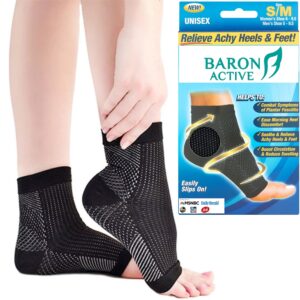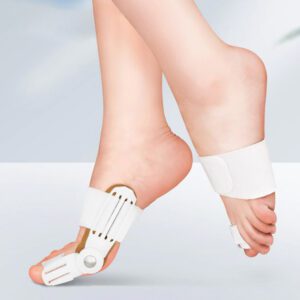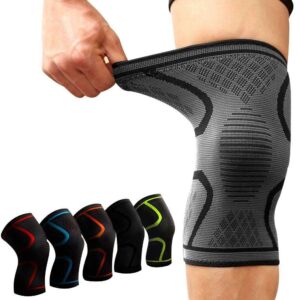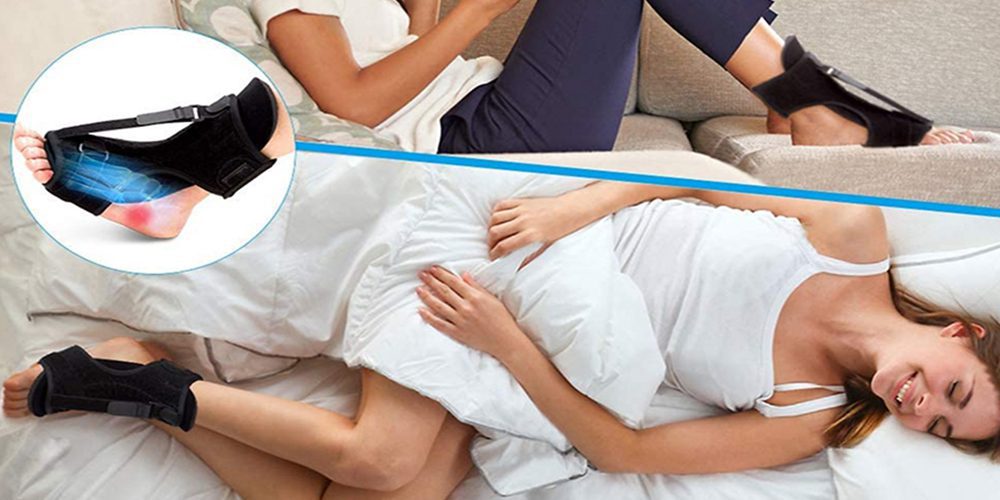What do you think of when you hear the word support hose or compression stockings? You probably think of the unsightly hose that your grandmother used to wear. Good news, things have improved drastically since then and compression hosiery are no longer the ugly old hose of the past today. Compression stockings and socks are some of the most stylish products on the market and benefit everyone who wears them. Advancement and Medical textile technologies has allowed for products to be more sheer more durable and more effective in everyday use.
What are compression socks?
Compression socks (or compression stockings) are special types of socks that are meant to gently squeeze your legs more than ordinary socks. The goal is to improve blood circulation throughout the lower limbs, especially in your legs.
It’s a really useful and common thing. However, it is also an underused alternative. To put it another way, more individuals could benefit from their usage.
How does graduated compression work?
The concept behind compression is simple and it results from the application of an elastic garment around the leg that exerts controlled graduated pressure to help blood flow and circulation against the pull of gravity. Graduated compression stockings are great tools for keeping your legs healthy and nearly everyone can benefit by wearing them.
Wearing compression can help to prevent
- Leg fatigue
- Swelling or fluid buildup in the feet and ankles caused by sitting or standing for long periods of time
- Lymphedema
- Pregnancy and vascular disease
- DVT
- Varicose veins and spider veins
Wearing compression stockings can greatly improve the health for individuals who travel a lot sit or stand for extended periods of time or generally have tired achy legs at the end of the day. Even athletes use them today to improve performance and speed up recovery after intense physical activity.
The types of compression socks
Today’s world separates between two different types of compression socks: graduated and anti-embolism stockings. The main difference between the two is that graduated compression socks start at a higher level and gradually decrease in pressure as they go up your leg whereas anti-embolism stockings create even pressure along the legs.
Graduated Compression – Graduated compression socks look like normal tube socks except they have a tight cuff at the top of them, which squeezes your leg as it gets toward the top of the sock. Graduated compression socks provide more pressure on your ankles and feet, which helps blood circulate back up through your legs.
Anti-Embolism – Anti-embolism stockings have a strong band that goes around the upper thighs and another one that goes from just above the knee to just below it. Anti-embolism stockings are better for people who have swelling in their feet or ankles because they provide less pressure on your ankle and more on the calf area. The purpose of these stockings is to prevent blood from clotting when you’re traveling.
In addition, many manufacturers have created anti-embolism stockings that are strong but lightweight. This means they can be worn with comfort and look like regular socks .
Why do athletes use compression socks?
Compression socks and compression sleeves are worn by many athletes in a variety of sports. And while there isn’t much evidence to suggest that athletes who wear compression socks have better performance, there is some evidence suggesting that it can aid recovery.
A recent Australian study found out that runners wearing compression socks were performing better on subsequent performances than those who didn’t wear them. This means that compression socks help runners improve their personal best times, which in turn makes them faster.
There have been hypotheses about the impact they may have on a runner’s circulation – increased oxygen delivery to muscles, improved blood circulation, and faster lactic acid removal – but we don’t know yet if that’s true.
But what we definitely know is that compression socks have a huge impact on protection for athletes. Compression socks are made from thicker materials than regular socks, so they’re protecting the skin and keeping the legs warm and dry.
Who can benefit the most from wearing compression stockings?
The benefits of compression socks, according to doctors, are that you don’t need a prescription to try them and for the most part, there are no negative side effects.
Some people are concerned that compression socks are tighter than normal socks and leave indentations on their legs. They may be concerned about whether or not the compression socks are restricting their circulation. But that’s a misconception. For the most part, that isn’t the case for 99 percent of individuals. The only time issues could arise is for unhealthy persons with severe heart conditions or peripheral arterial disease, in which blood flow between the feet or legs and the heart is poor.
Besides athletes, everyone can and should wear compression socks for one reason or another. If you need to travel longer distances, you can benefit from compression socks because they prevent swelling in the feet and ankles. If you’re a pregnant woman, it’s very important that you wear compression socks to prevent blood flow problems to your uterus or legs.
Traveling by plane is a huge issue for many people. That’s why you should always wear your compression socks when traveling on a plane. In fact, the blood flow in your feet and legs can be up to 2-3 times greater when you have them on. That means that chances are there will be no swelling in your legs or feet from being seated for so long.
The main thing to remember is that a little pressure goes a long way. While some people wear them too tightly, most people wear compression socks that are just right. If you feel like your circulation is being restricted by your socks or legs are getting extremely uncomfortable when wearing them, then you know something’s wrong.
Standing or sitting for longer periods of time during long days at the office can be exhausting and it could lead to varicose veins and other blood flow problems. The best thing you can do for yourself is to wear compression socks while standing or sitting at work. Doing so will help your legs recover from a long day of standing, walking, running errands, etc…
Specific jobs, like nurses and flight attendants, wear compression socks every day to prevent blood clotting and they also use them for deep vein thrombosis. Compression stockings can be worn by anyone who has jobs that require them to stand or sit all day long as well as those with health conditions such as varicose veins, poor circulation, leg swelling, or heavy legs.
Are there any negative effects from wearing them?
When compression socks are used correctly, they are not hazardous. That does not imply that they are risk-free for everyone in every scenario. Compression socks should not be used by some persons, such as those with delicate or easily irritated skin. It’s also critical to ensure that compression socks are sized properly.
Here are 3 potential risks you need to be aware of:
- Compression socks can cut off circulation. Compression socks and stockings are designed to give continuous pressure and aid circulation by compressing the legs. However, if they aren’t fitted correctly, they can inhibit blood flow in your legs instead of supporting it.
- Compression socks can chafe and bruise legs. Dry skin or traveling in locations with dry air (such as on an airplane) are more likely to cause chafing and abrasion. Compression socks can cause cuts, scratches, and blows to people who have a damaged skin barrier. When compression socks or stockings are worn correctly, this is considerably less likely to occur.
- Compression socks can cause itching, irritation and redness. Compression socks can irritate your skin and cause itching. Redness and temporary dimpling in the skin around the sock’s edge might appear if compression socks are not properly put on.
Takeaways
Compression socks are generally safe to use if they are used according to a doctor’s instructions and the manufacturer’s guidelines. Compression socks can be harmful if worn for too long or worn incorrectly, causing your skin to break and enabling an infection to develop.
You shouldn’t wear the same pair of compression socks for days at a time, and you should consult your doctor about the amount of time suggested for treating your condition.
Consider obtaining a prescription for medical-grade compression socks if you use them frequently. If adverse effects like broken or abraded skin occur, stop using the socks and notify your healthcare practitioner.
We’re a company that specializes in the manufacturing and sale of high-quality compression socks. We want to provide you with the best service and get your feedback. If you have ever used compression socks before then we encourage you to comment this post with your tips and recommendations for other readers!























One Response
I am a 79 year old female who doesn’t get enough exercise. My ankles burn and hurt after sleeping about half the night. This wakes me up because it is painful and I can’t go back to sleep. I’ve purchased two pairs of knee high compression socks to sleep in, but this hasn’t helped at all. What am I doing wrong?